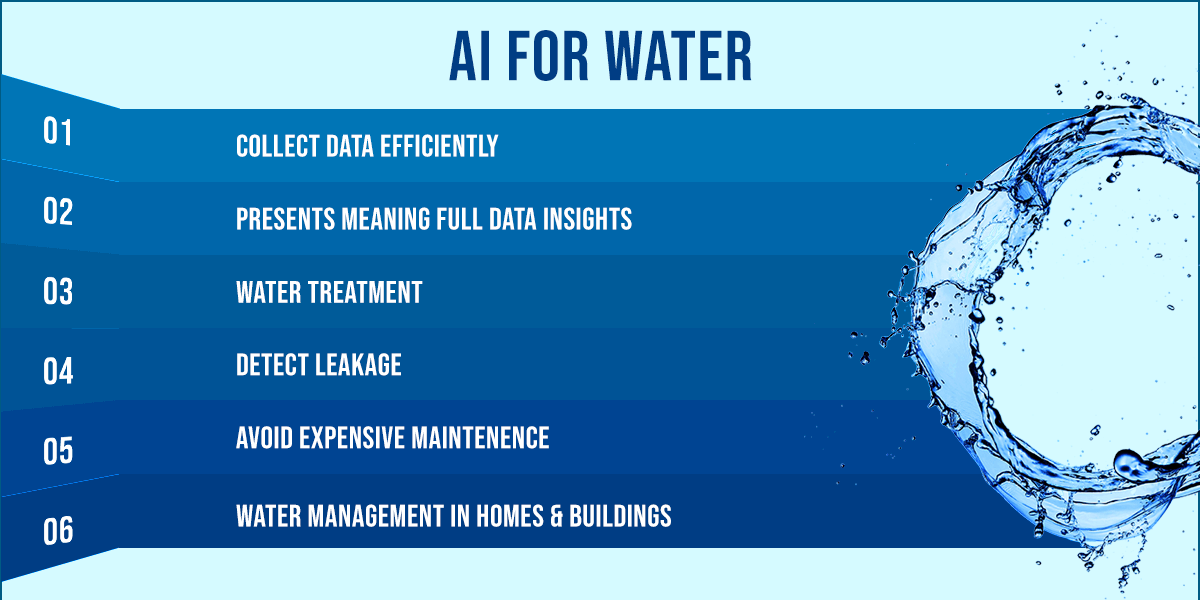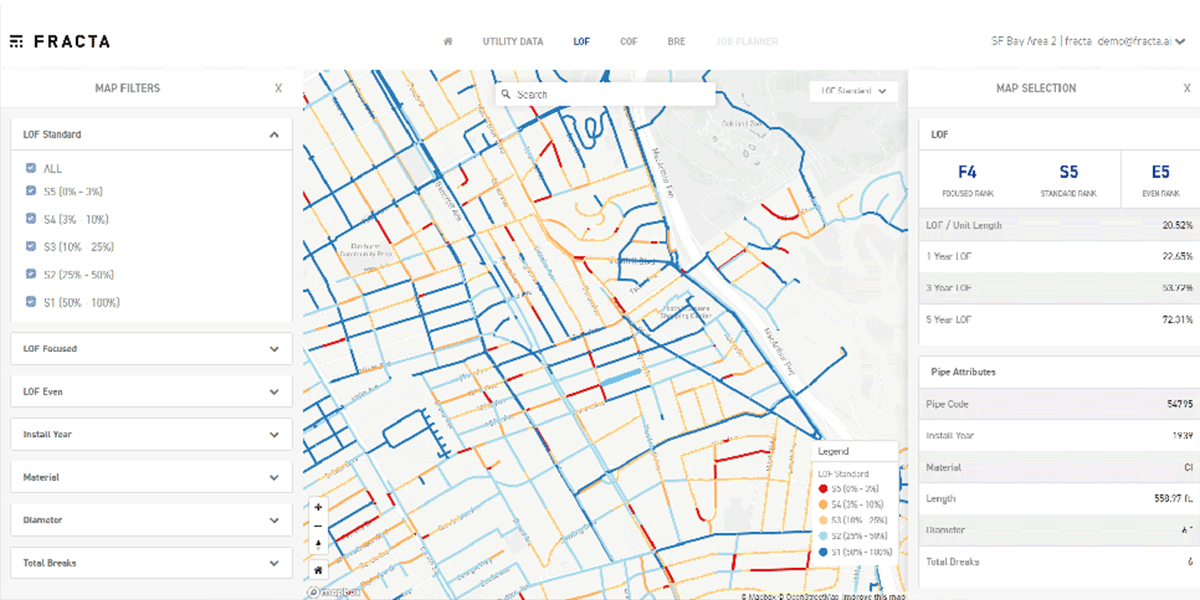Researcher’s predicted water will be scarcer than oil by 2030 and demand is going to exceed supply by 40%. Less than 1% of all water on earth is fit for human consumption. The question for us is how we can continuously monitor water everywhere without locating a lot of manpower to it.
We live in a data-driven economy and AI-driven world where everything is powered by data and artificial intelligence. There is a paradigm within AI known as deep learning that specially focuses on creating models based on the human brain to achieve efficient operations. Artificial intelligence measures data, analyzes, learns, and deduces.
Measure → Learn → Infer
Following are the water problems that can be solved by artificial intelligence:

1- Collect data efficiently:
AI technology helps to collect lots of real-time data to properly manage the water industry. Researchers are using internet-connected wireless sensors to collect data. These sensors can measure temperature, pressure, water flow, soil moisture, and more. These are connected to the internet from where anyone can stream data to the cloud. This ecosystem of internet-connected sensors is called IoT. These AI-powered sensors can measure vital things and that’s how we can collect data very efficiently.
Aquasuite is a Netherland-based smart water technology company, which applies AI techniques, such as machine learning and predictive analysis, to monitor, analyze, and control water performance.
2- Do smart things with collected data:
Billions of sensors and meters generate Exabyte’s of data. Artificial intelligence helps in extracting meaningful insights from the data and guides in altering behaviour for effectively managing water. AI helps researchers to:
- Track trends and Reduce risk of water shortage
- Identify anomalies
- Forecast demand and Predict events
- Avoid water loss
- Maintain stable water supply
- Sewer management
- Cut the water usage
3- Water treatment:
AI can guide researchers to monitor water networks and wastewater treatment. Companies are designing AI-based models to monitor water quality, process wastewater, remove pathogens, and make water fit for drinking.
Faircap AI is a social enterprise that develops new water filtration technologies to provide clean drinking water solutions at an affordable cost. By using artificial intelligence in integration with other technologies, the company aims to create large water monitoring datasets for rapid identification of potential water-borne diseases using a smartphone application.
4- Detect leakage:
Gallons of water get lost every day around the world because of inefficiencies like leakages, wastage, ageing pipes, and many more reasons. AI empowers researchers with the ability to perform real-time analysis of water flow with algorithms and identify water leakages due to any fault in water infrastructure. It assists in taking real-time decisions.
Fracta, a California-based startup, is using artificial intelligence to detect leakages in pipelines and valves and helps to make better asset management and maintenance decisions.

Source: Fracta.ai
5- Water management in homes and buildings:
Municipal Corporation and societies are taking advantage of artificial intelligence to manage water supply properly. AI collects water usage data in homes and buildings and helps in designing water- and energy-saving programs.
AI can monitor water usage by utilizing flow sensors in residential buildings. Flow sensors can be deployed in pipelines to measure the water flow data and start streaming data to the cloud. This helps in designing efficient water utilization methods.
6- Avoid expensive maintenance:
AI is being leveraged by engineers and water management authorities to keep water equipment and pipeline networks in the right order and provide cost-effective maintenance solutions.
Pipebots is a UK-based project that aims to develop AI-powered micro-robots to analyze the state of underground pipelines and affordably repair them.
Similarly, IBM, a global technology company, has utilized AI and machine learning to develop an in-pipe inspection prototype named Sewer Spy to find erosion and corrosion of pipelines.
To summarize:
AI provides tools and techniques to solve the water crisis. We deploy low-cost AI-powered sensors everywhere to monitor and manage water. People are fighting for basic necessity. We should start building these AI-based intelligent machines to solve global issues. AI has all the answers, we just need to use it in the right way to solve this water scarcity problem. Researchers are working towards a reliable, sustainable, and resilient water infrastructure with the assistance of artificial intelligence.

